
Fishing lure manufacturers have displayed uncanny ingenuity in making plastic, metal, and wood offerings that can shimmy, wiggle, gurgle, pop, dart and quiver. But no artificial fishing bait can ever display that totally alive, frenetic movement or the scent appeal that a real natural bait can.
 Lure and fly fishing are by far the most popular ways to go after gamefish today. And there’s no denying their effectiveness. But the fact is the angler using live bait will often take more fish. That translates into more fun on the water. If you're introducing a newcomer or youngster to the sport, bait will almost guarantee enough action that they'll like fishing and want to get more involved in it, gradually working into lure fishing and fly casting.
Lure and fly fishing are by far the most popular ways to go after gamefish today. And there’s no denying their effectiveness. But the fact is the angler using live bait will often take more fish. That translates into more fun on the water. If you're introducing a newcomer or youngster to the sport, bait will almost guarantee enough action that they'll like fishing and want to get more involved in it, gradually working into lure fishing and fly casting.
If you like to target big fish in particular, records show that bait often fools the largest specimens of our most popular gamefish. Many state record bass fell for live offerings. But if you think bait fishing means attaching a nightcrawler to a fishing hook and lounging back with your "fishing pole" propped over a forked stick, think again. Using bait properly can be a challenging and engaging sport.
Here's a rundown on five of the best live bait offerings you can use for the country's most popular sportfish and tactics for presenting them.

fish.
Fishing With Live Minnows
One of the central facts of life in the aquatic world is that big fish eat little fish. Pike, bass, stripers, crappies, catfish, walleyes, white bass, rockbass, trout and pickerel are notorious for their fish-gobbling tastes. But even fish like bluegills and redbreasts will grab minnows at times.
The simplest way to get minnows is to buy them at a bait store. Put them in a plastic-foam cooler, a bait bucket that can be hung in the water or a livewell in your boat.
Sometimes, though, bait shops may be closed or not available on your way to the fishing destination. In this case, you’ll have to catch your own. Seining is without question the best way to accomplish that. Find a small creek or shallow area along the edge of a lake and use a 4-by-8 or 4-by-12 foot fine-mesh seine fishing net with weights on the bottom, floats on top and wooden handles on each end. Sweep slowly through the pool, then work into shallow water and lift the net. Chances are it will be alive with thrashing bits of silver. Sort through the ones you netted and keep just those that are the best size for the fish you will be going after.
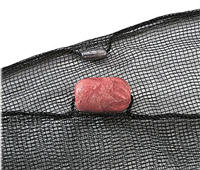
Umbrella nets and cylindrical traps are also effective for catching minnows when baited with bread, oatmeal or cat food. You can also use tiny hooks, light line and bread balls and catch minnows one at a time. This is a technique Florida’s top live bait fishermen use to collect jumbo shiners that tempt outsized largemouths. Attaching a doughball or small piece of worm to a size 10 or 12 hook, they catch shiners up to ten inches long, which they then use to fool bass as heavy as ten pounds!
How to Fish Minnows
Impale minnows through both lips from the bottom up, or through the back, using size #2/0-6 hooks, depending on the size of baitfish and quarry you're going after. One of the cardinal rules of minnow fishing is this: if the bait becomes lethargic, replace it with a fresh one.
Minnows can be fished in a variety of ways. Floating them beneath a fishing bobber is an effective tactic in spring because so many fish are in the shallows and you can allow the bait to swim suspended near cover with this rig. This is a great technique for pickerel, bass, crappies and catfish.

Weight Assortment - 72 pieces
Drift fishing with minnows using a couple of split shot fishing weights like the Bass Pro Shops Split Shot Lead-Free Weight assortment or a dipsey sinker for weight also works well, particularly for crappies. A method I often use is to cast and reel in a minnow as if it were a plastic worm. This gives you the wriggling appeal of live bait, plus the motion of a retrieved offering. This technique also works when you're fishing jigs sweetened with minnows — a hot strategy for walleyes, pike and pickerel.
Tip: Try fishing two rigs at once. Cast one rig out with a minnow floating beneath a bobber. Then cast another out without a float and work it back slowly like a jig or plastic worm near the bottom. When a fish strikes, place the other rod in a holder so a fish doesn’t jerk it overboard!
Tip: Don’t wait too long before setting the hook. If you give a fish too long before setting up, it may swallow the bait and hook and be more difficult to release if you want to let it go.
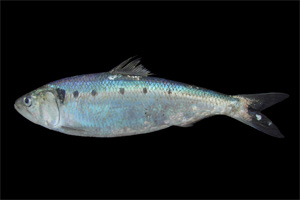
open water, such as striped bass.
Fishing With Live Shad
Certainly minnows are the indisputable best bait for shoreline-oriented fish like largemouths. But shad are the number one offering for larger quarries that roam the open water, such as striped bass. They're also excellent for big flathead and blue catfish, and don't be surprised to latch onto a few hefty largemouths and walleyes with these baitfish as well.
One of the best ways to catch shad is with a cast fishing net. Look for shad in coves and near points, dams and riprap along bridges. Another option is to go out at night in areas where they are abundant and hang a lantern over the boat's gunnel. The shad will be attracted by the light and congregate beneath the boat; then it's simply a matter of throwing out the cast net and hauling them in.
How to Fish Shad
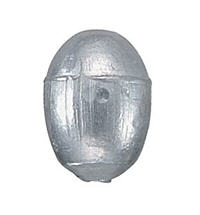
Shad keep best in large, round containers with aerated water. Adding a bit of rock salt, ice and a chemical bait additive also helps keep them perky.
Shad can be fished many ways. If gamefish are shallow, drifting them beneath a cork in 4-10 feet of water can be very effective.
Drift fishing without a float or anchoring over structure, however, are the top methods. Rig the shad on a #4/0-2 hook attached to an 18-36 inch leader onto your fishing line. Tie the leader to a barrel swivel and thread an egg sinker like the top customer rated Bass Pro Shops Egg Sinker or bullet fishing sinker onto the main line above that — usually one-half to 1 1/2-ounces is about right.
Position this rig so that it's either a few feet off the bottom or just above where you've located fish on the depth finder. Stripers, catfish and the occasional largemouth bass will do the rest.
Tip: While live shad are tops for many gamefish, sometimes a dead shad, or several cut chunks of shad is the best offering for both stripers and catfish. Fish it on the bottom so the scent can waft out in the currents.

Fishing With Live Madtoms
In some parts of the country they’re called “stonecats.” But whatever the name, these small catfish can tempt any good-sized gamefish. They're especially effective on smallmouths in rivers. A few bait shops sell them, but unlike minnows, for the most part you'll have to catch your own.
Find riffly areas in rocky rivers and streams and search for them by slowly lifting up rocks. You can either scoop them up with a small fishing net or place a milk carton painted black inside next to the rock and they'll usually swim into it.

You shouldn’t anticipate finding a madtom beneath every rock. They're not particularly abundant. But if you turn over enough stones, you'll catch a sufficient number for a day's fishing. The baits are hardy and can often last through catching several fish before you need to replace them. Better still, they are not attractive to small fish so almost every bite you get will be from a good-sized bronzeback.
How to Fish Madtoms
Before grabbing your first madtom to bait up, a note of caution is in order. These catfish have a mild poison in the spines on the top and sides. Be careful when you handle them so you don't get jabbed. Keep the baits in a minnow bucket or plastic foam cooler and hook them through both lips on a size 1 or 2 hook.
Since they head for the bottom, no weight is needed. Cast up and across and allow the tom to dive and drift with the current. When it crawls under a rock, tug it free. If no strike comes, reel in and repeat. When a fish takes, let it run several seconds, reel up any slack and set the hook hard.
Tip: Top places to fish madtoms include deep pools, undercut banks near shore, heads of deep runs, and swirling eddies beneath rapids. Also try undercut banks, limestone ledges, and logjams near shore.
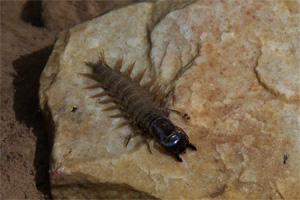
streams, are good for a number of species,
including bass, catfish and trout.
Fishing With Live Hellgrammites
These ornery-looking critters are the larval forms of the Dobson fly. Measuring 1-3 inches, they're found in rocky rivers and streams and are terrific baits for smallmouth, largemouth, spotted bass, panfish, catfish and trout. Use one to two-inchers for trout and panfish, bigger ones for bass.
These baits can be captured around the same rocky, riffly areas in streams and rivers where you find madtoms. Lift rocks and scoop them up with a small dip net, or have one person spread a seine out while another lifts rocks upstream, loosening the baits so they drift down into the mesh.
Store hellgrammites in a container with leaves, sticks and a small amount of water. They'll stay lively for days like this if kept cool.
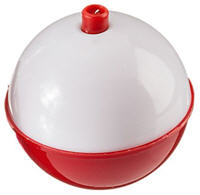
How to Fish Hellgrammites
Use size 2 to 6 fine wire hooks and thread the point beneath the "collar" on the insect's back then out the other side. Add one or two small split shot for weight. Try fishing with and without a fishing float, to see which works best. If the current is slow or the water low, a bobber helps. Otherwise, simply cast the bait out and let it drift naturally.
Tip: Like all insects, hellgrammites have three pairs of legs. They also have two powerful mandibles (jaws) that can draw blood. To hold one safely, grasp it tightly behind the head with a thumb and forefinger on each side of the insect’s “collar.”
Fishing With Live Crayfish

resisting the scurrying action of crayfish.
Few gamefish can resist the scurrying action as well as the taste and scent appeal of these crustaceans. After all, they’re the gamefish equivalent to lobster! They're good baits for bass of all species, plus panfish, trout and catfish.
Ponds and streams can both harbor crayfish, which are often found under rocks and debris or simply burrowed in the mud. Baiting a minnow trap with bread or meat will attract them, or you can use a dipnet or can with holes in it to catch them.
Lift logs and rocks in shallow waters until you spot a crayfish, then put the net or can behind it. Push a stick in front of the crustacean and it will scurry backwards into the container. If you don't find many baits during the day, try using this same approach at night with a friend holding a flashlight. Crayfish can be kept in a foam cooler or bait bucket with a small amount of water and wet leaves.
How to Fish Crayfish
Pierce crayfish through the tail on a size 1/0 to 4 hook and either drift fish or cast the bait to cover such as rockpiles, points, eddies, docks, islands and drop-offs. If the water is deep, add a couple of split shot for weight.
Tip: If you purchase crayfish, try to buy ones that match both the size and shape of those found in the waters you fish. Color in particular can vary widely from location to location.
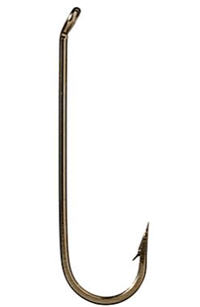
Shank Hook
Panfish Live Bait Picks
Suppose you just want to catch a stringer full of tasty bluegills or shellcrackers for a delicious dinner? Two offerings get the nod.
The first is the plain old worm — garden worm, red wriggler or a piece of nightcrawler — any of the three will do.
The second choice is a cricket or grasshopper, both members of the Orthoptera order.
These fishing lures exude a strong scent and are relished by all members of the sunfish family. Thread them on a size 4-8 long shank fishing hook like the Eagle Claw Lazer Sharp Long Shank Hook and fish beneath a bobber with a split shot or on spreader hooks above a 1 ounce dipsey sinker when fish are hanging out in deep water.
Tip: You can buy crickets at bait stores, or catch your own in grass and under logs and rocks in fields. Store them in bait boxes that let you retrieve one at a time or put them in a can with grass.
Check the Regulations: Every state has regulations regarding the catching and use of various live baits. Be sure to check these before you head out. They can usually be found on the state’s fish and game website.
- 256908 views

